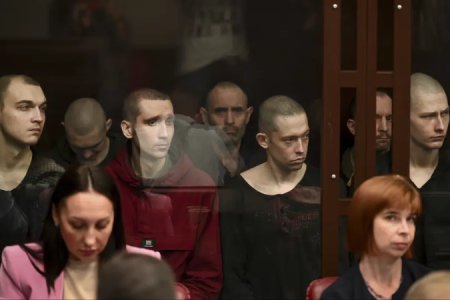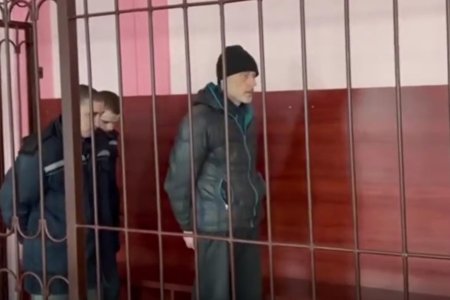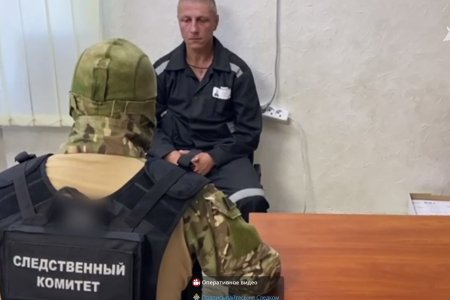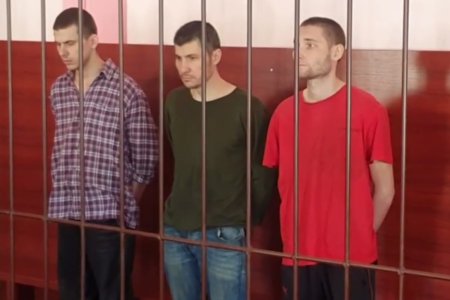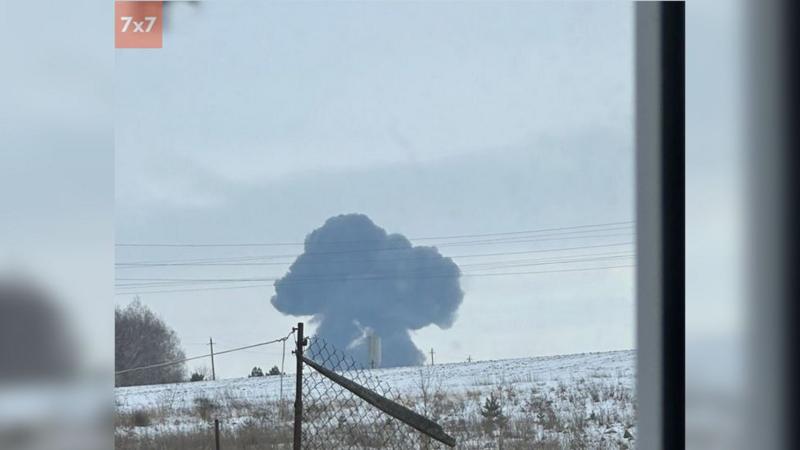
It is two weeks since a Russian Ilyushin Il-76 military transport plane came down in the Belgorod oblast, near Russia’s border with Ukraine, yet Russia has not come up with any proof that the plane was, as it claims, carrying Ukrainian prisoners of war. Although Moscow was swift to assert that Ukraine had deliberately downed the plane, it does not appear to have provided access to the site, and it is refusing to return the bodies of the 65 prisoners of war it claimed were on the plane. There are also numerous other aspects to the story which have been questioned, not least by former prisoners of war now safely back in Ukraine. They dismissed from the outset the claim that the Russians would have been transporting 65 Ukrainian prisoners of war with only three guards.
It is not in question that the plane came down in the late morning of 24 January 2024. Judging by the photos posted on Russian social media, it is also very likely that there were no survivors.
Russia immediately claimed that the plane had been transporting Ukrainian prisoners of war [POW] for a planned exchange of prisoners, and, shortly afterwards, that Ukraine had deliberately downed the plane.
The first reports in the Ukrainian media said that a military plane carrying missiles had come down. Ukraine later stressed that a Russian military transport plane, especially one believed to be carrying missiles for Russia’s relentless attacks on Kharkiv oblast would certainly have been a legitimate target. While it has confirmed that there had earlier been a plan for an exchange of prisoners on 24 January, it stresses that Russia had not provided any information to indicate that it was planning to transport POWs that day.
Although Russia made a lot of noise that day, and later demanded a UN Security Council meeting, it is Ukraine’s President Volodymyr Zelensky who has called for an international investigation. Judging by the level of secrecy as of 6 February, there seems little or no chance that Russia will agree to any such independent probe.
Tetiana Katrychenko is from the Media Initiative for Human Rights which has played an important role in probing the killing back in 2022 of over 50 Ukrainian prisoners of war at the Olenivka prison in occupied Donbas. In an interview to the Free our Relatives program on Hromadske Radio on 2 February, she summarized what is known and what remains unclear about the Il-76 disaster, and how it differs radically from the fatal explosion at Olenivka.
For the moment, she says, there is no way of knowing whether Ukrainian POWs really were on board the Ilyushin 76 which crashed on 24 January. The only bodies that anybody seems to have identified at the Belgorod morgue were of members of the crew. While Ukraine’s Coordination Headquarters, which organizes prisoner exchanges, did confirm that an exchange of prisoners had been planned for 24 January, the only list that the Russian side had, after the disaster, provided was that ‘leakded’ prior to the earlier prisoner release earlier in January.
Katrychenko explains that the lists for any exchanges since Russia’s full-scale invasion of Ukraine are very different from those back in 2017 and 2019 when each person’s name was known. At present, even those bodies responsible for trying to get prisoners of war released do not know exactly who is in Russian captivity. On the eve of the 3 January exchange of prisoners, a list appeared on the Telegram channel of a pro-Kremlin propagandist. That list contained around 300 people, including most of the 230 who were released on 3 January. It was the remaining people who proved to be on the list that Russia, after the disaster, presented as having been the list of those purportedly on the plane that crashed. Some of the POWs released on 3 January have confirmed that they had seen the other people on the list, or even that they had been in the same cells as them.
If the plane really was carrying mainly Ukrainian POWs, why is Russia blocking an international investigation and not releasing the bodies of the victims?
Instead, they posted a video purportedly showing fragments of a body with a tattoo which was supposed to show links with the Azov Regiment. The Coordination Headquarters, however, said that the families of the POWs from the list that Russia came up with do not recognize the tattoos.
More importantly, the very few photos available show a scene radically different from that seen after the downing by a Russian BUK missile of Malaysian airliner MH17 on 17 July 2014, or after the earlier shooting down of a Ukrainian military transport plane in 2014 when 49 Ukrainian soldiers were killed. In both cases, bodies were hurled over a large area. There is nothing similar here at all.
As mentioned, scepticism was expressed from the outset by former prisoners of war. While confirming that they too had been transported by Ilyushin transport planes, they immediately dismissed any possibility that there could have been 65 Ukrainian POWs and only three guards. There would likely be up to twenty such guards. In addition, Katrychenko notes that the number of POWs seems very small, with all those expected to be part of the exchange, i.e. around 200 people, likely to have been on the flight.
Such exchanges had previously taken place in Sumy oblast, and there would have been no reason for the Ukrainian side to have expected the Russian military plane to be carrying prisoners of war.
It is interesting, possibly telling, that, despite blustering threats to stop all exchanges, a second, with the release of 207 POWs, took place a week after the Il-76 disaster.
If there really were 65 prisoners of war on the Russian plane, this would make the death toll worse even than at Olenivka. Katrychenko, however, dismisses attempts to draw analogies between the two situations. With respect to the disaster on 24 January, there is, for the moment, no actual proof that Ukrainian POWs were on the plane.
Russia was quite open in showing charred bodies and the gutted barracks the day after the devastating explosion in the night from 28- 29 July 2022 that killed over 50 POWs and seriously injured scores of others. Katrychenko mentions that there was even a photojournalist working for Reuters who had access, and points out that the situation with journalists in Russia and access to sites should surely be easier than in occupied parts of Donetsk oblast.
There is similar secrecy, however it does seem likely that Russia has different things to hide. In the case of Olenivka, there is considerable evidence suggesting that this was a deliberate mass execution perpetrated by Russia, with this the main reason for Russia’s refusal to allow access to international investigators. If Russia could provide evidence that Ukrainian prisoners of war were on the Ilyushin Il-76, and that the plane was deliberately shot down by Ukraine, it would have every reason to trumpet this. Even if it failed to convince Ukrainians and the international community that this had been done with the intention of killing Ukrainian POWs, the propaganda value to Moscow would be great.
